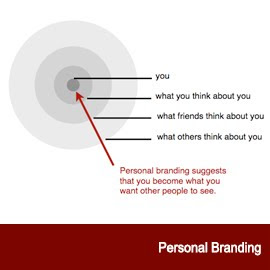 Ask most public relations professionals what is the first thing to do during a crisis and the pat answer is "get ahead of the crisis." That was the advice given to Hewlett-Packard’s (HP) board of directors as it related to chief executive Mark V. Hurd.
Ask most public relations professionals what is the first thing to do during a crisis and the pat answer is "get ahead of the crisis." That was the advice given to Hewlett-Packard’s (HP) board of directors as it related to chief executive Mark V. Hurd. And now everyone on the board is under fire, with an unlikely charge by Lawrence J. Ellison, the chief executive of Oracle. According to Ellison, he was familiar with the sexual harassment claim against Hurd. He was familiar with the debate that raged between the board of directors. And he was familiar with the fact that the board had investigated the claim and found it to be false.
So what happened? APCO, the public relations firm advising the directors, advised that the company would face a firestorm if the accusations of sexual harassment were made public, regardless of whether or not they were true. They went so far as to make mocked up newspapers to show what the damage would be like.
According to Ellison, the board was originally split 6-4 over disclosure. On Friday, board member Marc Andreessen said the decision was unanimous.* Andreessen joined the board last year. He is co-founder and general partner of Andreessen Horowitz and co-founder and chairman of Ning (another social network that has made questionable decisions recently). He reportedly played a key role in the ouster.
What Went Wrong With The Mark V. Hurd Public Relations Debacle?
Some public relations pros are still second guessing the backlash against HP. They stand by the principle to get ahead of the problem and disclose everything. They obviously don't understand media relations whatsoever.
While Hurd had allegedly been found padding expense reports to hide a questionable relationship (approximately $20,000), most members of the media would have found the sexual harassment charges a non-event if they were false. There might have been a firestorm or not, no matter how juicy the story might have been.
Michael Holston, HP's general counsel, told investors on the conference call Friday that Hurd "had a close personal relationship" but Allred's law firm clarified "there was no affair and no intimate sexual relationship between our client and Mr. Hurd."
Stated plainly, it seems like the board of directors created an illusion of a unanimous disclosure vote to show solidarity to disclose what amounts to a non-event. The tension this caused between the board and Hurd was insurmountable, ultimately leading to the resignation (despite the breach in conduct).
The fudged expense reports could have been a quiet personnel matter, easily resolved as Hurd paid them back. It was certainly a lapse in judgement to fudge them in order to hide a relationship. However, the $20,000 compared to the reported millions in severance. Some people are baffled by this settlement. Don't be. The amount is reflective of the mistake.
What One Quote Stands Out As Grossly Misguided?
It didn't come from Hurd. It was Andreessen who said "HP is not about any one person." But unfortunately, that is precisely what the new message seems to be. Andreessen has suddenly risen to become the face of the company. And, he is already named as one of the people deciding on a replacement.
That may smell funnier than anything Hurd did. But that aside, if politics and public relations pat answers weren't involved in the decision making process, this might be be a good time to ask how differently it might have played out. We'll explore this in a second post tomorrow or Thursday. In the interim, PR pros ought to consider that crisis communication is situational.
I often illustrate the point in classes by contrasting up real life crisis situations between a tiff between a homebuilder and a handicapped elderly woman and also a tiff between a homebuilder and a vandal. Students are frequently surprised at the outcomes. We handled the one that turned out right.
HP did it wrong, and now it will still face months (and maybe years) of unflattering media coverage. You know, the stuff they wanted to avoid. Worse, we suspect it may become uglier, depending on who they pick as a replacement and how well that person performs.
* Having served on many boards, directors often revote on issues to show solidarity, even if the minority has reservations. Ergo, they knuckle.





















